I know that this question would not have made much sense a few years ago, but the technological development has been so impressive these past few years that the Ethernet switches have not only become a normal part of a home network, but using the SFP ports for a better connection is not really an alien concept for smaller networks. The main culprit for this increased demand is, as expected, the PoE camera which has gotten very cheap, while the image quality and the security have only gotten better. But that’s not the only reason why you may need an Ethernet switch in your home or small businesses, there’s also the question of covering larger areas with WiFi, including the surrounding outdoor property.
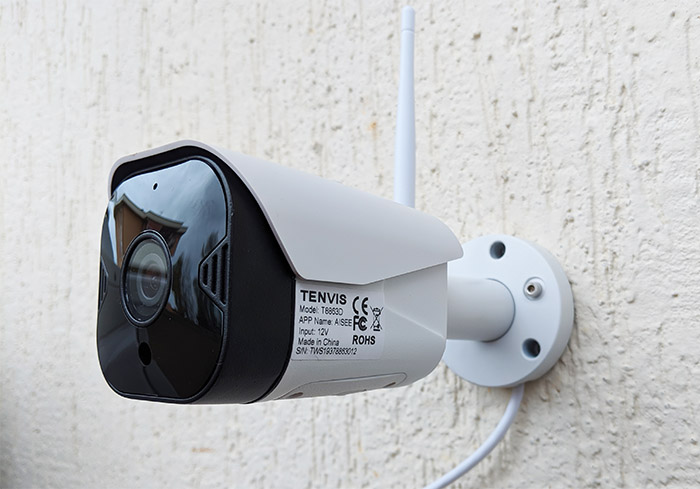
And yes, that can only be done reliably with wireless access points – if you don’t want to bother with the connection to a power outlet, then you also need to rely on PoE. Add up some Desktop PCs (for SMBs) and some gaming consoles or smart TVs (for your home), and you’ll run out of ports sooner than you may expect.
One of the easiest solution is to add a new Ethernet switch to your network, but why would you bother using the SFP ports, when you have the RJ45 Ethernet LAN ports available to connect two switches?
RJ45 vs SFP (or SFP+)
Yes, cascading multiple Ethernet switches has been a reliable and incredibly easy method to increase the number of ports available – just take a CAT cable (ideally above CAT 5 to easily go above to 1,000Mbps) and connect it to one port on the first switch and to one port on the second switch. This method is not going to offer anything more than the possibility to communicate with the secondary switch and connect more ports. So, why would you need more? It depends. In case you do have at least a couple of Ethernet switches (most likely L2 managed) that have SFP slots, there are a few advantages over the RJ45 ports:
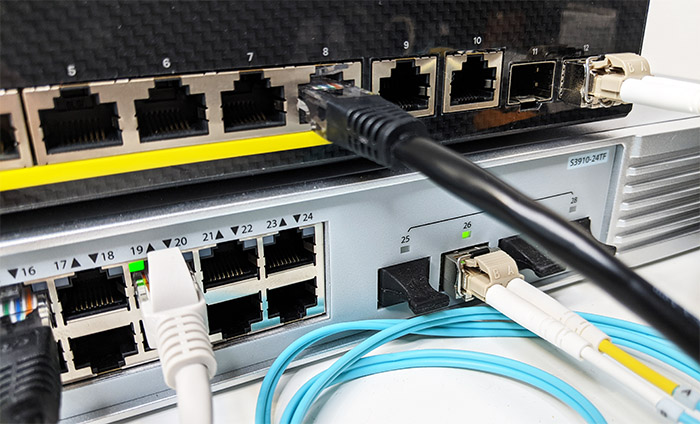
There are multiple types of CAT cables with the most common ones being CAT5E and CAT6, and the maximum supported length is 328 feet (or 100 meters); the CAT7 cables don’t support a greater distance, but a better throughput, going up to 10Gbps (same as CAT6a). Inside a normal office, most people will be happy with the performance of Ethernet cables but, if you need to interconnect switches from two buildings – can be offices or just a shed from which you want to further extend your WiFi with an AP – then you got two options:
- one is to rely on a very particular type of long range Ethernet switches and I have tested the TRENDnet TPE-LG80 which could extend the PoE signal up to 656 feet, but be aware that it will work on very specific applications and the average throughput would not go above 10Mbps;
- use SFP fiber transceiver modules and optical cables to go up to 10km / 6.2 miles (single mode standard) or up to 50 miles / 80km in single extended mode, which is quite the improvement over the RJ45 + CAT cables performance.
This applies better for SFP+ and 10GBASE-T ports where the SFP+ does have a far lower power consumption than the 10Gbps Ethernet port and in a large network, the difference is going to be far more obvious (especially regarding the heat generation). Some people will immediately ask, why exactly should you bother with anything above 1Gbps? The answer is simple: the release of the WiFi 6 standard. I have already tested a few outdoors WiFi 6 access points and both had multi-Gigabit ports, so, if you want to cover any outdoor area with WiFi 6, you do need powerful switches to handle the new access points.
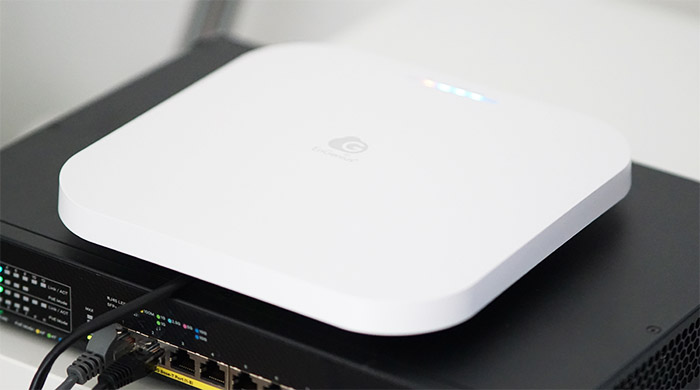
The SFP connections are not sensitive to electromagnetic interference (RFI) even if you use long cables and yes, for small networks, it may not be that important, but it’s still an advantage that SFP has over RJ45 Ethernet ports. It’s also worth mentioning that due to the far better interference isolation, you can also get a lower latency with SFP and SFP+.
There are obviously some areas where the Ethernet connection shines and that’s mostly regarding the fragility of the transceivers (there are multiple parts that can fail, such as the optical cable and the SFP slot itself) and most importantly, there is a steep difference in cost between RJ45 Ethernet cables and the SFP transceiver module + cables. Still, you get the option to either go with the expensive modules or the budget-friendly ones.
Are inexpensive transceiver modules reliable?
If you have been using the SFP ports on your network switch, I am sure that you have heard at least once about the FS transceivers. And they have been growing in popularity over the past few years for good reason: FS.COM has managed to keep the cost lower than let’s say Cisco, while providing an excellent performance, very similar to the more expensive brands.
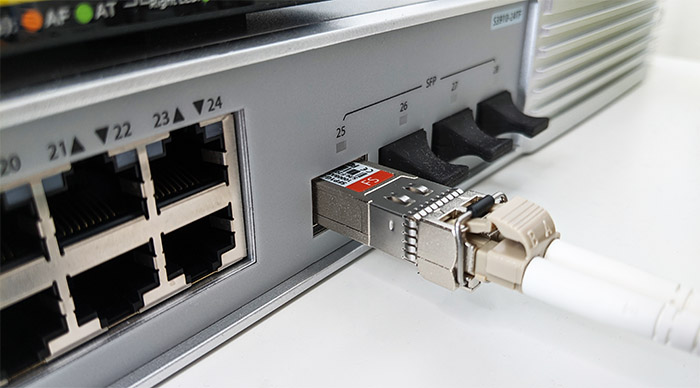
Of course, there are other inexpensive brands as well, but let’s just say that Reddit has almost created a cult for FS.COM transceivers, so, they have to be good, right? I have a couple of FS.COM 1000Base SFP transceiver modules and a few optical cables, and while I haven’t used them for a very long time, they seem very robust – I also liked how easy it is to disconnect them from the network switch.
The optical cables are in their nature more fragile than the CAT cables, but as I said before, you can cover far more ground without having the annoying distance limitations. The FS optical cables seem fine and they’re very easy to attach and detach from the transceiver. Now that we have established that there are affordable, yet fairly reliable transceiver + optical cables on the market, you do have the option to inter-connect multiple switches over greater distance without having to compromise on the bandwidth and throughput.
Can you interconnect multiple switches from different brands using the SFP ports?
Of course you can, but be aware that some switches have these ports turned off by default. For example, I have connected a Zyxel XS1930-12HP with an FS S3910-24TF and, to my surprise, there was no communication between the two devices. I then checked the LED which was, of course, turned off, so I had to enter the FS switch software and, from Favorites > Port Settings, I identified the port that was, by default set to Down and, after setting it to Up, I could access the Zyxel Ethernet switch as well. Obviously, this will work with other network switches that have SFP ports as well (any brand), so, if you need to connect an office to your home network (for shared PoE cameras access or for simple WiFi coverage), SFP (or SFP+) is the best way to do it.
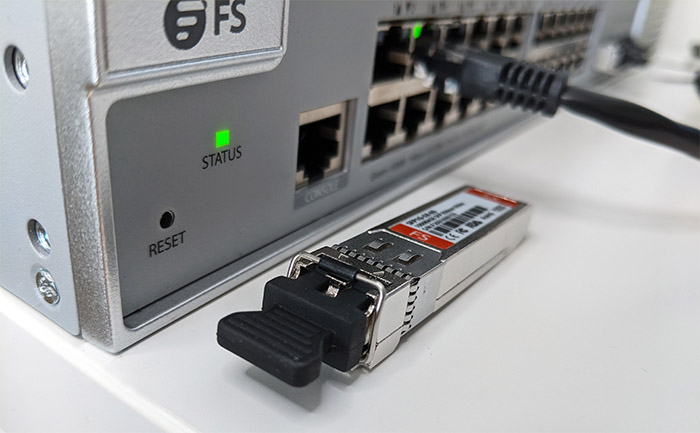
Can you link aggregate multiple SFP ports?
Yes, you can and it can be the best way to connect multiple switches due to the advantages that the link aggregation can bring to the table. You can get more bandwidth, redundancy and there’s also the load balancing aspect which ensures that in case one link fails, it will immediately go on the secondary available link (with little to no packet loss – it depends on the devices). Perhaps this will be less important in a home network, but even a small office could benefit from having their devices connected to the network at all times, especially when dealing with applications that need an uninterrupted connection.
Of course, you can use the Ethernet ports to achieve the same result, but if distance and the risk of interference are important factors, then using SFP is a must.
Note: Before connecting the cables to the SFP ports, make sure to have already configured both switches for link aggregation, otherwise you will cause a network loop.
Can you connect network switches from different brands using link aggregation?
I know that larger businesses have no trouble getting all the necessary hardware from one manufacturer and having it set up by professionals, but some smaller offices and especially the home users will not really have the same luxury, so they’ll most likely have switches from different brands. And if at least two network switches have SFP ports available, why not try and link aggregate the two devices? Well, because it’s not always possible.

Before everything else, both switches need to support the 802.3ad standard. In some cases this may be enough to inter-connect switches from different brands, but I have set up LACP link aggregation on some Zyxel switches (XS1930 and GS1920), as well as on an EnGenius ECS1008P (using the RJ45 ports) and an FS S3910-24TF with poor results. The Zyxel switches could interconnect without problems, so the models from the same brand can use the link aggregation advantages, but mixing a Zyxel switch with an EnGenius one showed that they were inter-connected, but no data would pass between the two devices, the same as when trying a Zyxel switch with the FS switch and the EnGenius switch with the FS S3910-24TF.
I am pretty sure that the FS switch will work with Cisco, since they have so much in common, but Zyxel and EnGenius seem to be completely closed for outside brand link aggregation.

Mark is a graduate in Computer Science, having gathered valuable experience over the years working in IT as a programmer. Mark is also the main tech writer for MBReviews.com, covering not only his passion, the networking devices, but also other cool electronic gadgets that you may find useful for your every day life.
